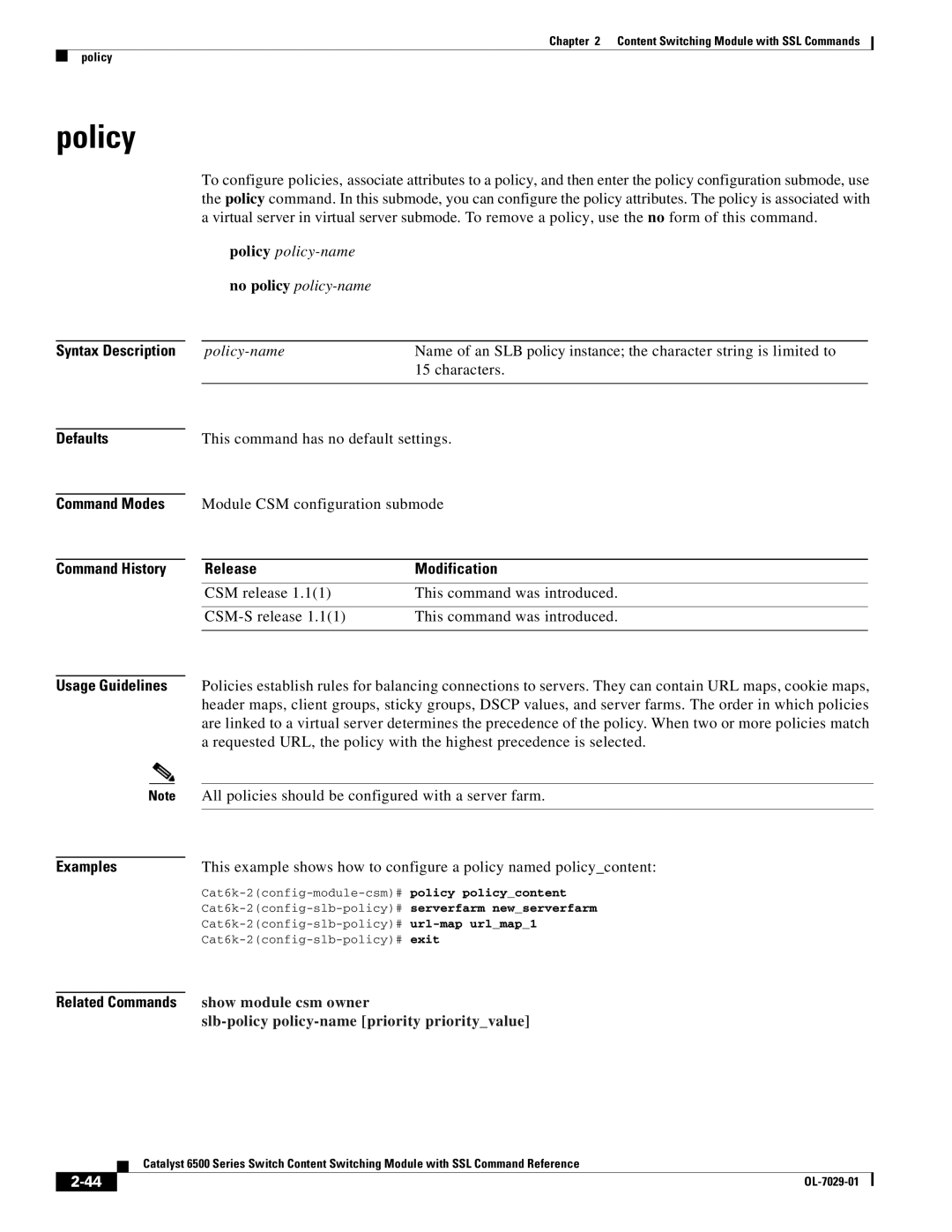
Chapter 2 Content Switching Module with SSL Commands
policy
policy
To configure policies, associate attributes to a policy, and then enter the policy configuration submode, use the policy command. In this submode, you can configure the policy attributes. The policy is associated with a virtual server in virtual server submode. To remove a policy, use the no form of this command.
policy policy-name no policy policy-name
Syntax Description |
| Name of an SLB policy instance; the character string is limited to | ||||
|
|
|
|
| 15 characters. | |
|
|
|
|
|
| |
|
|
|
|
|
|
|
Defaults |
| This command has no default settings. | ||||
|
|
|
|
|
| |
Command Modes |
| Module CSM configuration submode | ||||
|
|
|
|
|
|
|
Command History |
| Release | Modification |
| ||
|
|
|
|
|
|
|
|
|
|
| CSM release 1.1(1) | This command was introduced. | |
|
|
|
|
|
|
|
|
|
|
| This command was introduced. | ||
|
|
|
|
|
| |
|
|
|
|
|
|
|
Usage Guidelines |
| Policies establish rules for balancing connections to servers. They can contain URL maps, cookie maps, | ||||
|
|
|
| header maps, client groups, sticky groups, DSCP values, and server farms. The order in which policies | ||
|
|
|
| are linked to a virtual server determines the precedence of the policy. When two or more policies match | ||
|
|
|
| a requested URL, the policy with the highest precedence is selected. | ||
|
|
|
|
|
| |
Note |
| All policies should be configured with a server farm. | ||||
|
|
|
|
|
| |
|
|
|
|
|
|
|
Examples |
| This example shows how to configure a policy named policy_content: | ||||
|
|
|
| |||
|
|
|
| |||
|
|
|
| |||
|
|
|
| |||
|
|
|
| show module csm owner |
|
|
Related Commands |
|
|
| |||
|
|
|
|
| ||
Catalyst 6500 Series Switch Content Switching Module with SSL Command Reference
| ||
|
